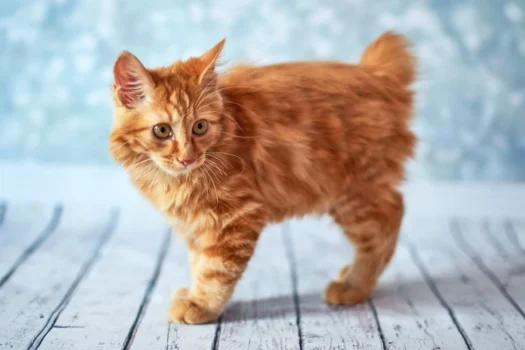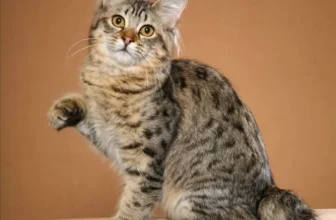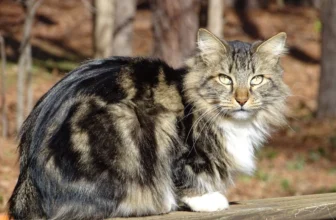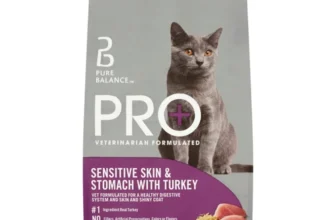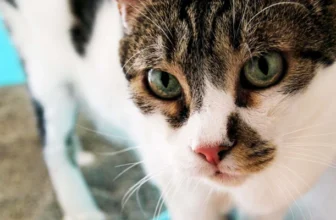As cat owners, we all want our feline friends to live healthy and happy lives. However, in recent years, obesity has become a growing concern in American Bobtail Cats. Obesity is a serious health condition that can have devastating effects on your cat’s overall wellness and lifespan. In this article, we will explore the causes, signs, health risks, and prevention of obesity in American Bobtail Cats. Let’s dive in and learn how to keep our furry companions at a healthy weight.
What is Obesity in American Bobtail Cats?
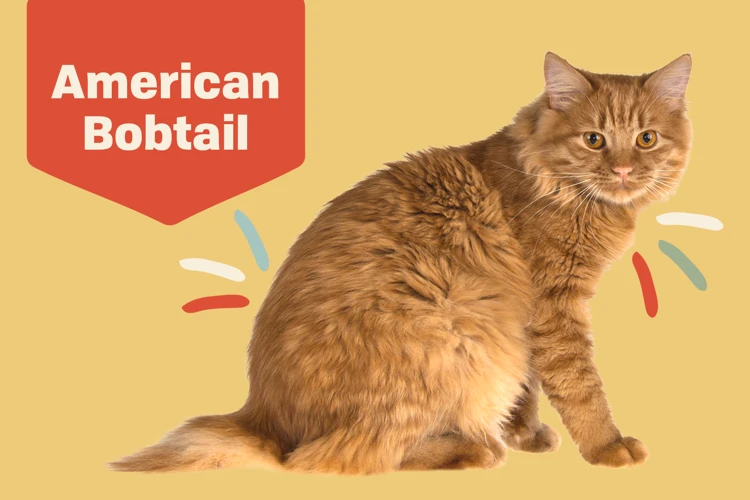
Obesity is a common and serious issue among American Bobtail cats. It is a condition where a cat’s body weight is significantly higher than the normal range for their breed and age. This excessive weight gain can cause severe health problems and cut short the lifespan of your beloved feline companion. Understanding the causes and signs of obesity can help you prevent and manage this condition in your American Bobtail cat. In the following sections, we will explore the causes, signs, and health risks of obesity in American Bobtail Cats (source).
Causes of Obesity in American Bobtail Cats
Obesity in American Bobtail Cats is a growing concern among pet owners and veterinary professionals. It is characterized by the excessive accumulation of body fat which can cause various health problems. There are several causes of obesity in American Bobtail Cats including genetics, overfeeding, lack of physical activity, and underlying medical conditions.
One of the main causes of obesity in American Bobtail Cats is overfeeding. When cats are given more food than they need, they tend to store the excess calories as fat. This can be compounded by certain feeding practices such as free-feeding, where food is constantly available to the cat, or feeding high-calorie diets that are not nutritionally balanced.
Another cause of obesity in American Bobtail Cats is lack of physical activity. Cats that are primarily indoor pets may not get enough opportunities to exercise and burn off excess calories. This can also be compounded by age-related changes that can cause a decrease in energy levels and a decrease in metabolism.
Some medical conditions could also be a factor in the development of obesity in American Bobtail Cats. These include hypothyroidism, Cushing’s disease, and insulinoma. These conditions can interfere with the cat’s metabolism and cause weight gain despite a reduced calorie intake.
Genetics may also play a role in the development of obesity in American Bobtail Cats. Some cats may inherit a greater susceptibility to weight gain than others, which means they may need to be monitored more closely and follow a strict diet and exercise routine.
In order to prevent obesity in American Bobtail Cats, it’s important to address these causes and take steps to reduce the risk factors. Pet owners should ensure they are feeding their cats a balanced diet in appropriate portions to maintain a healthy weight. Physical activity should also be encouraged, which can be achieved through a variety of means such as interactive toys, climbing structures, and playtime with owners. Regular veterinary check-ups can help detect any underlying medical conditions that may contribute to obesity.
It is also important to note that obesity in American Bobtail Cats can increase the risk of developing other health issues such as diabetes, joint problems, respiratory issues, cardiovascular diseases, and urinary issues. It’s essential to manage and reduce obesity in American Bobtail Cats to keep them healthy and happy. For more information, feel free to visit our article on obesity in American Bobtail Cats and our tips on how to prevent obesity.
Signs of Obesity in American Bobtail Cats
Obesity is a common issue among American Bobtail cats, and it is crucial to keep an eye on their weight to ensure their long-term health. Some signs of obesity in American Bobtail cats include:
- Difficulty in moving: Obese cats may find it difficult to move around or jump onto surfaces as their excess weight puts pressure on their joints and muscles.
- Visible ribcage: If you cannot feel your cat’s ribcage when touching its sides, it may be hidden under excess layers of fat.
- Difficulty in grooming: Cats are naturally clean animals and can groom themselves meticulously. However, obese cats may find it difficult to groom themselves properly, leading to greasy fur and unhealthy skin.
- Round shaped body: As cats gain weight, their bodies may become round-shaped as the excess fat accumulates in their abdomen and hips.
- Breathing difficulties: Obese cats may also have breathing difficulties due to their excess weight putting pressure on their lungs.
It is essential to keep an eye out for these signs so that you can take the necessary steps to manage your cat’s weight. By managing your cat’s weight, you can decrease the risk of health problems associated with obesity. Such health risks include diabetes mellitus, joint problems, respiratory issues, cardiovascular diseases, urinary issues, and shortened lifespan, which we will discuss in the next section.
To learn more about the signs of obesity in American Bobtail cats, check out our article on obesity signs in American Bobtails.
Health Risks of Obesity in American Bobtail Cats
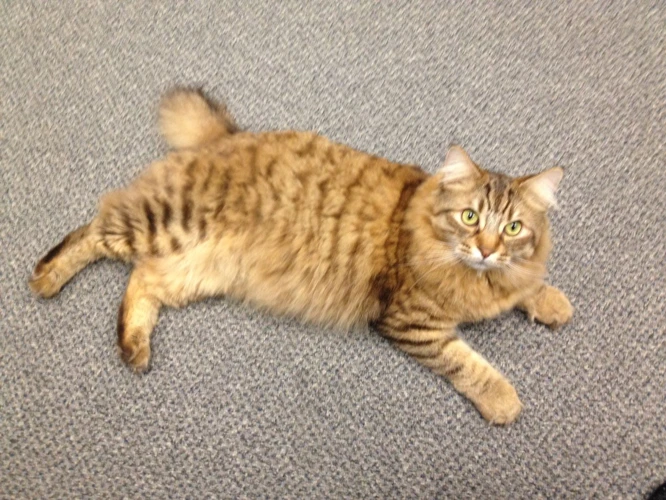
As with humans, obesity in American Bobtail cats can lead to a myriad of health issues. It is important to understand the risks associated with this condition in order to take the necessary steps to prevent it. From diabetes mellitus to cardiovascular diseases and shortened lifespan, the health implications of obesity in American Bobtail cats are significant. In this section of the article, we will explore the health risks that overweight American Bobtail cats are prone to. It is important to note that while some of these issues can be managed, others can be fatal. It is crucial to take obesity in American Bobtail cats seriously and take action to reduce their weight.
Diabetes Mellitus
Diabetes Mellitus is a serious health problem that can develop in obese American Bobtail Cats. This condition occurs when the cat’s body cannot produce enough insulin or cannot use insulin effectively. Insulin is a hormone that regulates blood sugar levels in the body. When insulin is not functioning correctly, the body’s cells cannot absorb sugar from the bloodstream, causing high blood sugar levels. High blood sugar levels can damage vital organs such as the kidneys, eyes, and nerves.
Symptoms of Diabetes Mellitus in American Bobtail Cats
Here are some of the symptoms that can indicate that your American Bobtail Cat has developed Diabetes Mellitus:
| Common Symptoms | Less Common Symptoms |
|---|---|
| Excessive Thirst | Vomiting |
| Increased Urination | Diarrhea |
| Decreased Appetite | Blindness |
| Weight Loss | Weakness |
| Vomiting | Depression |
| Dehydration | Coma |
If you notice any of these symptoms, you should consult a veterinarian immediately. Diabetes Mellitus can be managed with the proper treatment, but if left untreated, it can be life-threatening for your American Bobtail Cat.
Preventing Diabetes Mellitus in American Bobtail Cats
Obesity is a significant risk factor for Diabetes Mellitus in American Bobtail Cats. To prevent this disease, it is essential to keep your cat at a healthy weight. You can achieve this by feeding your cat a balanced diet and regularly engaging it in physical activities.
Feeding your American Bobtail Cat with a balanced diet that consists of high-quality protein, fiber, and adequate carbohydrates can help prevent Diabetes Mellitus. Unlike humans, cats are obligate carnivores, which means their nutritional requirements are different from ours. When feeding your cat, ensure that you provide them with high-quality cat food that meets their nutritional needs.
Regular exercise and physical activities can also help prevent Diabetes Mellitus in American Bobtail Cats. Exercise helps burn excess calories, strengthen muscles, and maintain healthy body weight. You can engage your cat in play or train it to walk on a leash.
In Conclusion
Diabetes Mellitus is a severe health problem that can develop in obese American Bobtail Cats. Early diagnosis and treatment can prevent complications and improve your cat’s quality of life. Maintaining a healthy weight, regular exercise, and proper diet management are some of the best ways to prevent Diabetes Mellitus. For more tips on managing obesity in American Bobtail Cats, check out our reduce obesity guide.
Joint Problems
Obesity can increase the risk of joint problems in American Bobtail cats. This is because the excess weight can put excessive strain on their joints, making them more prone to conditions such as arthritis. According to the American Animal Hospital Association, obese cats are five times more likely to develop arthritis than cats at a healthy weight. Arthritis can cause pain, discomfort, stiffness, and mobility issues in cats, making it harder for them to enjoy their daily activities.
The following are some joint-related problems that can affect American Bobtail cats with obesity:
- Arthritis: It is a common joint problem, especially in obese cats. Arthritis occurs when joint tissue wears away, causing bones to rub against each other. As a result, cats may experience pain, decreased mobility, and stiffness.
- Intervertebral Disc Disease (IVDD): IVDD is a condition that affects the spine and involves the herniation or rupture of intervertebral discs. Overweight Bobtail cats are more likely to develop IVDD because their excess weight puts pressure on their spine, leading to disc degeneration and rupture.
- Kneecap Dislocation: The extra weight can put added stress on the kneecap, causing it to displace or move out of place. This can cause pain and limping in cats.
To prevent joint problems in American Bobtail cats, it’s crucial to control their weight. Pet owners can take steps to help their cats lose weight through a combination of a well-balanced diet and regular exercise. A nutritious diet and exercise plan can reduce weight and create stronger muscles, which help alleviate joint pain and stiffness.
It’s essential for pet owners to work closely with their veterinarian to create a personalized weight loss plan for their overweight Bobtail cats. Vets can offer guidance and support to ensure that cats get the right amount of nutrition and exercise they need to reduce weight and improve their overall health. Regular veterinary check-ups can help spot joint-related problems early and provide prompt intervention to avoid further joint damage.
Regular exercise and physical activities can help cats lose weight and maintain a healthy weight, which can reduce the risk of joint problems. Owners should strive to encourage their cats to engage in regular activities that help burn calories, such as playing with interactive toys, climbing cat trees, or providing them with access to sufficient space and cat-safe outdoor areas.
Managing a cat’s weight and providing proper joint care can help prevent joint problems and keep American Bobtail cats healthy and happy for a long time. Consulting a veterinarian, providing activity opportunities, and a well-balanced diet plan are essential to help cats maintain a healthy weight and prevent joint issues.
Respiratory Issues
Respiratory issues can also arise due to obesity in American Bobtail cats. Extra weight and fatty tissues surrounding the airways can make it difficult for them to breathe normally. Obese cats are more prone to respiratory infections and may experience frequent coughing, wheezing and shortness of breath. They may also develop sleep apnea, which leads to temporary cessation of breathing during sleep. This is a serious condition that requires immediate veterinary attention.
Obese cats may also suffer from bronchitis, which is the inflammation of the lining of the bronchi in the lung. This can cause coughing, shortness of breath, and difficulty in breathing. Overweight American Bobtail cats may feel tired and lethargic due to difficulty in breathing and may not be able to lead an active lifestyle.
It is essential to monitor your cat for signs of respiratory issues, especially if they are overweight. Take them to the vet if you notice any difficulty in breathing, coughing or wheezing, and follow the prescribed treatments. It is crucial to address this issue to avoid further complications in the respiratory system.
Keeping your cat at a healthy weight can significantly reduce the risk of respiratory issues. Regular exercise, a proper diet, and feeding them in moderation are essential to prevent obesity in American Bobtail cats. Consistent efforts towards your cat’s weight management are necessary to ensure their overall health and well-being. Regular vet check-ups can help detect respiratory issues early, and appropriate measures can be taken to combat them.
Cardiovascular Diseases
When it comes to the health risks associated with obesity in American Bobtail Cats, one of the most serious is cardiovascular disease. This condition is a broad term that refers to any disease that affects the heart or blood vessels, and it can be life-threatening if left untreated. Here are some of the cardiovascular diseases that obese American Bobtail Cats are at risk for:
- Hypertension: When a cat is overweight, their heart has to work harder to pump blood throughout their body, which can lead to high blood pressure. Over time, this can damage the blood vessels and organs, and even lead to heart failure.
- Heart Disease: Obesity is a risk factor for a variety of heart diseases in cats, including cardiomyopathy (disease of the heart muscle) and congestive heart failure (when the heart can no longer pump enough blood to meet the body’s needs).
- Arterial Disease: Fatty deposits can accumulate in the arteries of obese American Bobtail Cats, which can reduce blood flow to vital organs like the brain, kidneys, and liver. This can lead to organ damage or even organ failure.
It’s important to note that cardiovascular diseases can have subtle symptoms in cats, and they may go unnoticed until they become severe. That’s why it’s crucial to keep your American Bobtail Cat at a healthy weight and take them for regular veterinary check-ups. If caught early, many cardiovascular diseases can be treated or managed effectively, but prevention is always the best strategy.
Urinary Issues
Obesity in American Bobtail cats can lead to various health complications, including urinary issues. Obese cats are prone to developing urinary tract infections, bladder stones, and cystitis. These conditions often cause discomfort, pain, and frequent urination in cats.
Here are some urinary issues associated with obesity in American Bobtail cats:
- Urinary Tract Infections (UTIs): An overweight cat may experience difficulty in cleaning itself properly due to limited mobility. This, in turn, increases the risk of bacterial infections in the bladder, leading to UTIs. UTIs can cause pain and discomfort while urinating, and can also result in severe complications if left untreated.
- Bladder Stones: Feline urolithiasis or bladder stones can develop in obese cats due to a high concentration of minerals in their urine. These stones are hard masses that form in the bladder, leading to discomfort and difficulty in urinating. If not treated promptly, bladder stones can block the urinary tract, which can be life-threatening for cats.
- Cystitis: Obesity increases the chances of developing cystitis, which is the inflammation of the bladder. Cats with cystitis experience pain while urinating, and may also have other symptoms such as blood in the urine, frequent urination, and difficulty in urinating.
It is essential to keep an eye out for these urinary issues in obese American Bobtail cats. Prompt medical attention and proper treatment can prevent these conditions from worsening and causing severe discomfort and complications for the cat. One way to tackle obesity-related urinary issues is by managing the cat’s weight through a proper diet and regular exercise.
Shortened Lifespan
Obesity in American Bobtail Cats can significantly reduce their lifespan, as it increases the risks of various health issues. According to recent studies, overweight cats live, on average, 2.5 years less than cats who maintain a healthy weight. This figure can go up to 4 years if the cat is obese from an early age.
Causes of Shortened Lifespan
Obesity can lead to various medical issues that can eventually reduce the cat’s lifespan. Some of the primary reasons for a shortened lifespan in obese cats are:
| Medical issues caused by Obesity | Effect on Cat’s Life Expectancy |
|---|---|
| Diabetes mellitus | Decreases lifespan by 2-4 years |
| Joint problems | Decreases lifespan by 1-2 years |
| Cardiovascular diseases | Decreases lifespan by 2-3 years |
| Respiratory Issues | Decreases lifespan by 1-2 years |
| Urinary issues | Decreases lifespan by 1-2 years |
Preventing a Shortened Lifespan
A healthy diet, along with regular exercise and veterinary check-ups, can prevent obesity in American Bobtail Cats. Obesity, as well as the associated medical issues, can be avoided through the following measures:
- Diet Management: Feeding them foods that have necessary nutrients but are low in calories can help maintain a healthy weight. A veterinarian can also advise on weight-loss diets for cats.
- Exercise and physical activities: Encouraging American Bobtail Cats to play and exercise can help them maintain an adequate weight and prevent the medical issues caused by obesity.
- Regular veterinary check-ups: Regular healthcare check-ups with a qualified veterinarian can help monitor the cat’s health status and identify early signs of any medical issues.
- Avoiding Overfeeding and Free-Feeding: Overfeeding or free-feeding a cat can lead to obesity. Hence, avoiding such practices can help prevent obesity and other associated medical issues.
By following these preventive measures, you can help ensure that your American Bobtail Cat enjoys a long and healthy life.
Preventing and Managing Obesity in American Bobtail Cats
As the old saying goes, prevention is better than cure. This holds true for managing obesity in American Bobtail Cats. It is important to take steps to prevent your cat from becoming overweight, but if your cat is already overweight or obese, it’s never too late to start implementing changes to help them achieve a healthier weight. In this part of the article, we will explore different strategies for preventing and managing obesity in American Bobtail Cats. From dietary management to regular exercise and check-ups, let’s dive into the ways we can help our furry friends live a long and healthy life.
Diet Management
One of the most important steps in preventing and managing obesity in American Bobtail Cats is diet management. As obligate carnivores, their diet should primarily consist of protein, with a moderate amount of fat and a minimal amount of carbohydrates. Here are some tips for effective diet management:
| Tip | Description |
| 1. Meal Portions | Measure meal portions carefully and only feed the recommended amount for their weight and age. |
| 2. High-Quality Food | Choose high-quality commercial cat food that’s been formulated for weight management and meets all nutritional needs. Avoid low-quality food that contains fillers, by-products, or artificial ingredients. |
| 3. Treats | Limit treats and choose low-calorie options. Avoid giving human food or table scraps that are high in fat and carbohydrates. |
| 4. Meal Frequency | Offer small frequent meals throughout the day, rather than one or two large meals. |
| 5. Gradual Diet Changes | Introduce diet changes gradually to avoid digestive problems and help your cat adjust to new food. |
It’s important to consult with a veterinarian before making any significant dietary changes, especially if your cat has any underlying health conditions or allergies. A veterinarian can also recommend a suitable cat food brand and provide a personalized diet plan based on your cat’s individual needs. Remember that diet management is just one part of preventing and managing obesity in American Bobtail Cats. Consistent exercise and regular veterinary check-ups are also critical for maintaining a healthy weight and avoiding health risks associated with obesity.
Exercise and Physical Activities
Regular exercise and physical activities are vital in preventing and managing obesity in American Bobtail Cats. These activities help promote weight loss, improve overall health, and prevent the development of obesity-related health issues.
Here are some tips for exercising and promoting physical activities for American Bobtail Cats:
- Engage your cat in interactive playtime using toys such as balls, laser pointers, and wand toys
- Encourage your cat to chase toys up and down the stairs or around the house
- Provide scratching posts, climbing trees, or perches to encourage your cat to climb and jump
- Set up an obstacle course for your cat to navigate, such as tunnels or hurdles
- Take your cat for walks outside on a leash
It is important to keep in mind that every cat has different activity levels and capabilities, so it is important to gradually increase the intensity and duration of their exercise routine. Over-exerting your cat can lead to injury or reluctance to continue exercising.
In addition to regular physical activities, providing opportunities for mental stimulation can also be beneficial for American Bobtail Cats. This can include puzzle toys or food dispensers that encourage them to think and problem solve.
Regular exercise and physical activities are essential in maintaining a healthy weight and promoting overall health for American Bobtail Cats.
Regular Veterinary Check-ups
When it comes to managing and preventing obesity in American Bobtail cats, regular veterinary check-ups play a crucial role. Such check-ups ensure that the cat’s weight and overall health are monitored consistently. Veterinarians can also assess the cat’s diet and exercise routine and provide recommendations accordingly.
During check-ups, veterinarians can also conduct physical examinations to identify any underlying health issues that may contribute to obesity. Any potential medical concerns can be detected early on and addressed before they develop into more serious health problems. This is important because obesity often leads to several health complications that can negatively impact the cat’s quality of life.
Regular check-ups help in evaluating the effectiveness of the weight management program implemented. If the cat is not losing weight or is even gaining weight, veterinary advice can be sought on adjusting the diet and exercise regime. Additionally, routine check-ups allow for prompt diagnosis and treatment of any other health concerns that may arise, such as joint problems or respiratory issues.
It is recommended that American Bobtail cats have at least one veterinary check-up annually. However, cats with obesity and other underlying medical conditions may require more frequent check-ups to ensure their health is constantly monitored.
Making sure that American Bobtail cats have regular veterinary check-ups is an essential part of preventing and managing obesity. With consistent monitoring, early detection and treatment of medical issues, and a well-managed diet and exercise regime, the cat’s weight and overall health can be maintained.
Avoiding Overfeeding and Free-Feeding
Overfeeding and free-feeding are common culprits of obesity in American Bobtail cats. To prevent this, it is important to establish and maintain a healthy feeding routine. Here are some practical tips to help avoid overfeeding and free-feeding:
- Measure your cat’s food: Use a measuring cup to ensure that you’re providing the right amount of food for your cat’s weight and age. Avoid guessing or estimating how much your cat needs, as this can result in overfeeding. Most cat food brands provide recommended serving sizes on their packaging, based on the cat’s weight.
- Avoid feeding table scraps: Human food is not nutritionally balanced for cats and contains high amounts of calories and unhealthy fats.
- Avoid leaving food out all day: Free-feeding, or leaving food out for your cat to graze on throughout the day, can cause overeating and weight gain. Instead, provide two or three small meals a day, with recommended portion sizes.
- Monitor your cat’s weight: Regularly weighing your cat and tracking their weight can help you identify changes in their appetite or activity level. This can be done at home using a simple scale or during regular veterinary check-ups.
By following these tips, you can help prevent obesity and ensure that your American Bobtail cat maintains a healthy weight. Remember, a healthy diet and exercise routine are key components of maintaining your cat’s overall health and well-being.
Conclusion
In conclusion, maintaining a healthy weight in American Bobtail cats is crucial for their overall well-being and longevity. Obesity in cats can lead to serious health complications such as diabetes mellitus, joint problems, respiratory issues, cardiovascular diseases, urinary issues, and shortened lifespan.
However, preventing and managing obesity can be achieved through proper diet management, regular exercise, and physical activity, as well as regular veterinary check-ups to monitor the cat’s weight.
It is essential to avoid overfeeding and free-feeding, as these can lead to excessive calorie intake and obesity. Instead, pet owners should measure the cat’s food portions and provide a balanced diet with a sufficient amount of protein, fiber, and other essential nutrients.
Incorporating regular playtime and exercise into the cat’s routine can also help maintain a healthy weight and prevent obesity. Simple activities such as playing with toys or encouraging the cat to chase a laser pointer can provide mental and physical stimulation, along with burning calories.
In conclusion, preventing and managing obesity in American Bobtail cats requires a combination of proper diet, exercise, and regular veterinary care. By following these guidelines, pet owners can ensure their beloved feline companion lives a healthy, happy, and long life.
Frequently Asked Questions
1. How does obesity affect American Bobtail Cats?
Obesity can lead to various health problems in American Bobtail Cats, such as diabetes mellitus, joint problems, respiratory issues, cardiovascular diseases, urinary issues, and shortened lifespan.
2. Why do American Bobtail Cats become obese?
American Bobtail Cats can become obese due to factors such as a sedentary lifestyle, overfeeding, free-feeding, and hormonal imbalances.
3. How can I tell if my American Bobtail Cat is obese?
You can tell if your American Bobtail Cat is obese by checking their body condition score, which involves feeling their ribs, spine, and pelvis. Obesity can also be visually apparent through a protruding belly and a lack of waistline.
4. Can obesity in American Bobtail Cats lead to diabetes mellitus?
Yes, obesity is a major risk factor for diabetes mellitus in American Bobtail Cats, as it increases insulin resistance and can cause a decrease in insulin production.
5. How can I prevent obesity in my American Bobtail Cat?
You can prevent obesity in your American Bobtail Cat by providing them with a balanced diet, ensuring they get enough exercise and physical activities, and avoiding overfeeding and free-feeding.
6. Can obesity lead to joint problems in American Bobtail Cats?
Yes, obesity can put pressure on American Bobtail Cats’ joints, leading to joint problems such as arthritis and reduced mobility.
7. What can I do if my American Bobtail Cat is already obese?
If your American Bobtail Cat is already obese, you can manage their weight by implementing a weight loss program under the guidance of a veterinarian, which may involve changes in diet and exercise.
8. Can obesity in American Bobtail Cats lead to respiratory issues?
Yes, obesity can lead to respiratory issues in American Bobtail Cats, such as difficulty breathing and decreased lung capacity.
9. How often should I take my American Bobtail Cat to the veterinarian?
You should take your American Bobtail Cat to the veterinarian at least once a year for regular check-ups and vaccinations. However, if your cat is overweight or has health issues, more frequent visits may be necessary.
10. Is it okay to let my American Bobtail Cat free-feed?
No, free-feeding can lead to overeating and obesity in American Bobtail Cats. It is recommended to feed them at set times and proper portion sizes.

